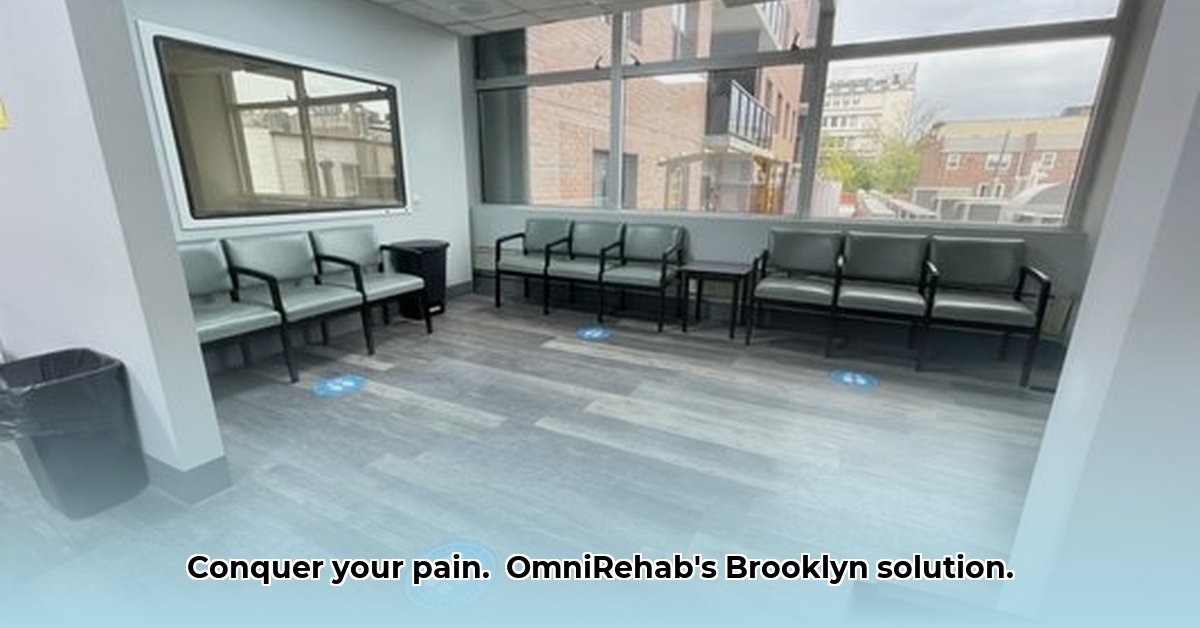
OmniRehab: A Case Study of a Multi-Specialty Therapy Center
OmniRehab, located at 1651 Coney Island Avenue, Brooklyn, NY, offers a unique multi-specialty therapy model, integrating various therapeutic services under one roof. This case study analyzes OmniRehab's business model, identifying its strengths and weaknesses, and offering actionable recommendations for improvement. The analysis considers service integration, patient experience, regulatory compliance, and risk management.
Background: OmniRehab's Integrated Model
OmniRehab's core strategy is collaboration. Rather than employing all specialists in-house, they partner with various providers—physical therapists, occupational therapists, speech therapists, counselors, and audiologists—creating a comprehensive network of care. This "one-stop shop" approach aims to streamline patient access to various therapies. However, this model presents both opportunities and challenges concerning coordination, quality control, and risk management.
Analysis: Strengths, Weaknesses, and Opportunities
Service Integration: A Networked Approach
OmniRehab's network model offers significant benefits: patients conveniently access comprehensive care, and the center leverages specialized expertise without the overhead of employing every specialist. However, this interconnectedness requires robust systems to ensure seamless communication and coordination. Without efficient information-sharing mechanisms, inconsistencies in treatment and potential delays in care could arise. How can OmniRehab effectively manage the complexities of a multi-provider network to optimize patient outcomes?
Patient Experience: Convenience vs. Complexity
The convenience of one-stop access is a major advantage for patients. However, the integration of diverse services necessitates clarity and transparency for patients to understand the referral process, treatment protocols, and overall care pathway. What strategies could enhance the patient experience, balancing simplicity with the complexity of a multi-specialty practice?
Regulatory Compliance: Navigating a Complex Landscape
Maintaining regulatory compliance across multiple affiliated providers is crucial for maintaining licensing and certification. Variances in standards or practices across affiliated entities could create compliance vulnerabilities for OmniRehab. What proactive measures are necessary to ensure consistent compliance with all relevant regulations?
Risk Management: Addressing Potential Vulnerabilities
OmniRehab's reliance on external partners introduces significant risk. Disruptions in partner services, unforeseen operational issues, or quality inconsistencies among providers could impact OmniRehab's reputation and the quality of patient care. How can OmniRehab mitigate these risks and ensure business continuity? What contingency plans are in place to address potential disruptions in affiliated services?
Actionable Recommendations
Implement a Centralized Communication System: Invest in a secure, integrated platform for real-time information sharing among providers, ensuring seamless communication and coordinated care. This would facilitate efficient updates on patient progress, reducing delays and inconsistencies.
Standardize Treatment Protocols & Procedures: Develop and enforce clear, standardized protocols for patient intake, treatment methods, record-keeping, and billing across all affiliated providers. This will ensure consistent quality and improve patient outcomes.
Embrace Technology for Enhanced Efficiency: Implement a robust electronic medical record (EMR) system to streamline data sharing, monitoring, and analysis. This will improve efficiency, enhance care coordination, and facilitate data-driven decision-making.
Invest in Ongoing Training & Development: Establish a comprehensive training program for all providers, covering best practices, regulatory updates, and new therapeutic techniques. This ensures all providers maintain current knowledge and skills.
Proactive Risk Management Strategies: Regularly assess potential risks associated with external partnerships, including contingency plans to address potential disruptions. Establish clear service-level agreements with all affiliated providers.
Expand Accessibility through Strategic Growth: Explore strategies for expansion, including opening additional locations based on patient demographics and needs, or incorporating telehealth services to broaden reach.
Conclusion
OmniRehab's multi-specialty model presents a promising approach to healthcare delivery. However, realizing its full potential requires addressing the unique challenges associated with coordinating care across a network of affiliated providers. By implementing the recommendations outlined above, OmniRehab can strengthen its operational efficiency, improve patient care, mitigate risks, and solidify its position as a leading provider of multi-specialty therapy services in the Brooklyn community. Failure to address these challenges could significantly impact both patient care and the long-term viability of the business.
(Optional) Appendix: Detailed Risk Assessment Matrix and Regulatory Implications (Available upon request)